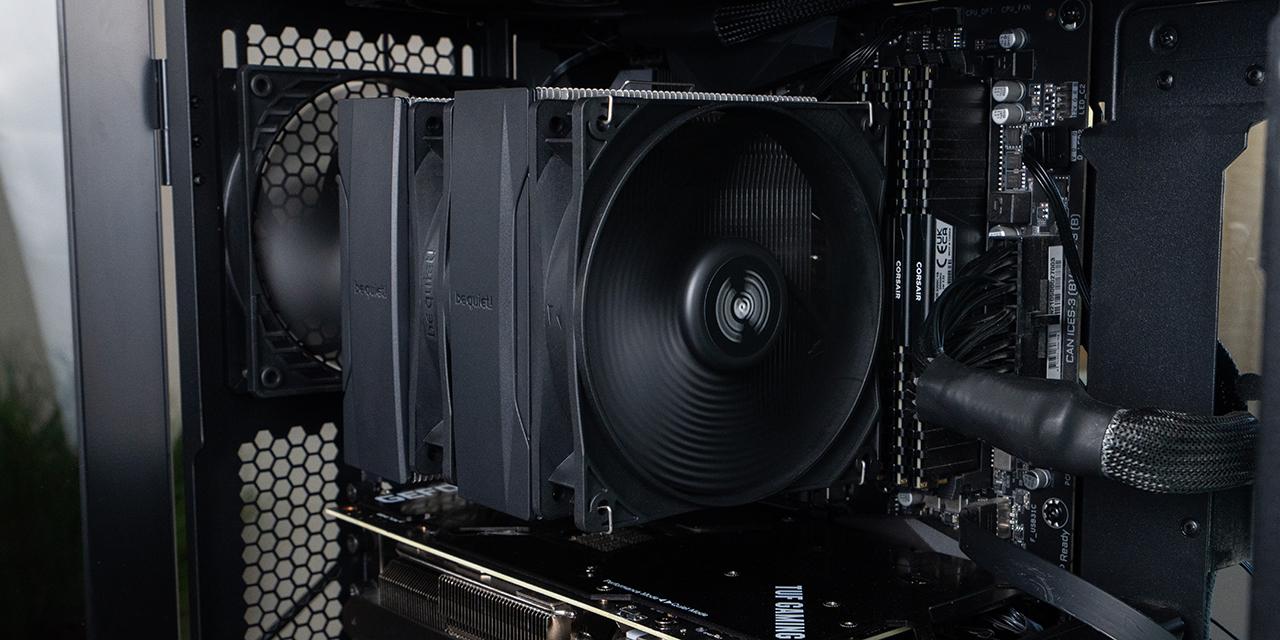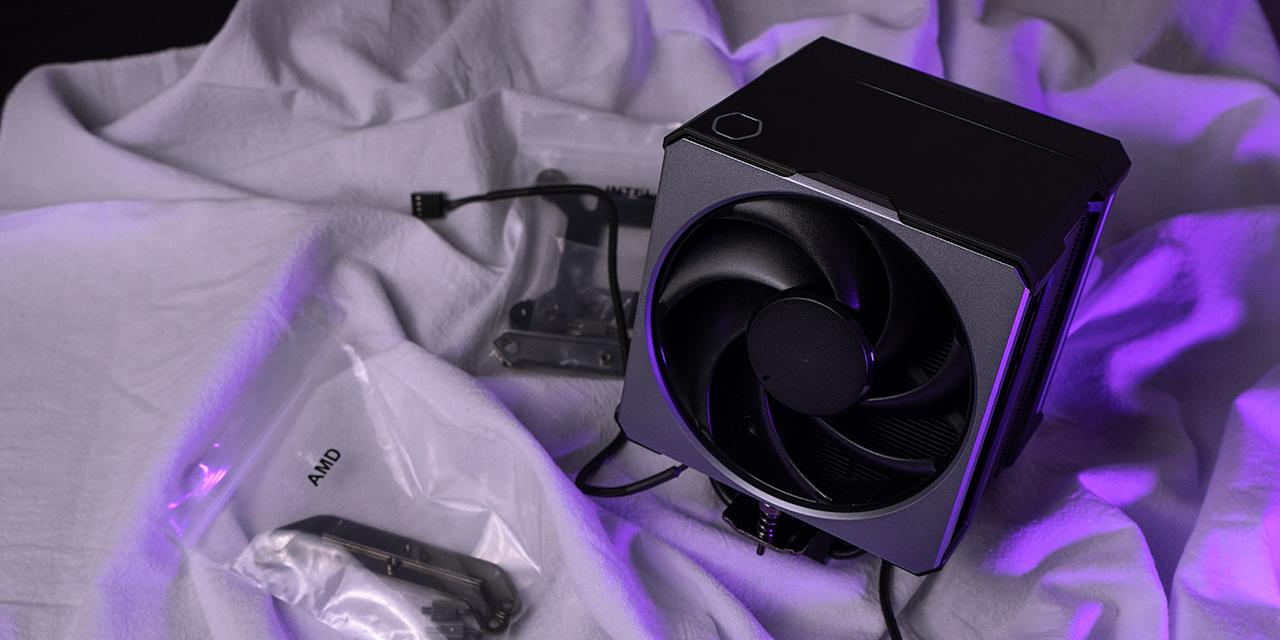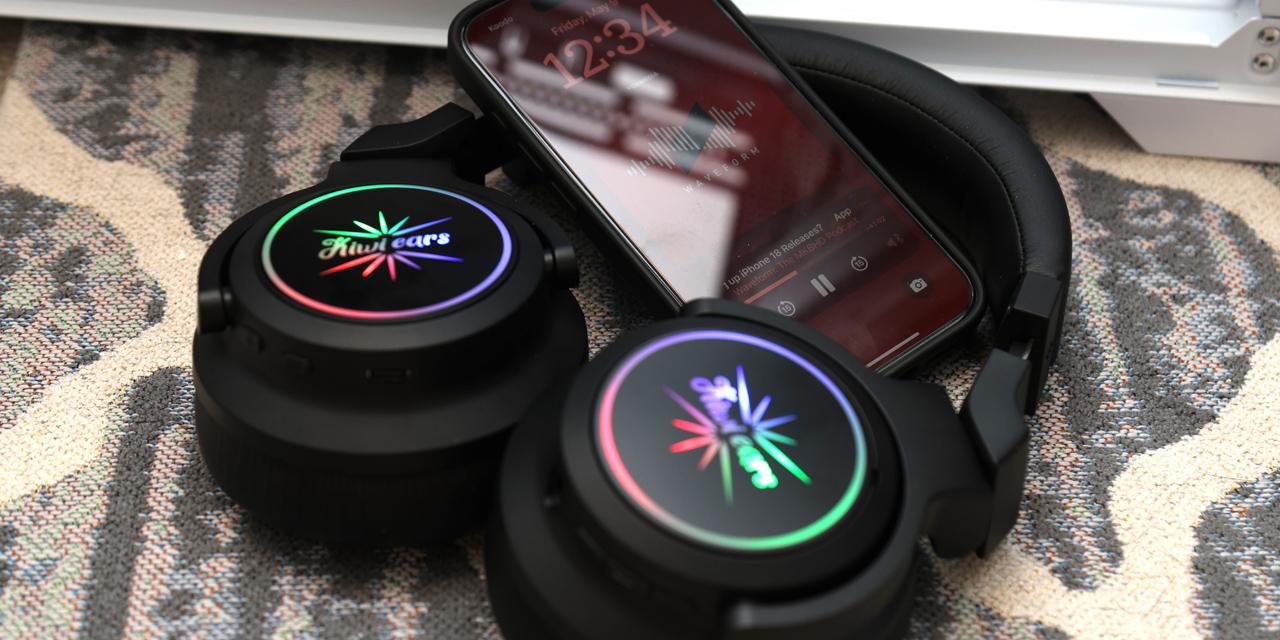Page 2 - A Closer Look - Hardware (External)
The ASUSTOR AS6404T's external design is identical to the AS7004T I reviewed a couple of years ago. From the angle of our photo above, it has an industrial/datacenter overtone to it. An infrared sensor for a remote control is included, where you can buy the AS-RC10 separately for about $35 at press time. Since the intention of this network attached storage system is aimed more for the business crowd than the home entertainment crowd, the looks are quite appropriate; otherwise, systems like the AS3202T will be a nice fit underneath your television at home instead
The quad-bay ASUSTOR AS6404T measures in at 17.0cm wide, 23.0cm deep, and 18.6cm tall according to specifications, which is quite standard. Unlike many prosumer or business class network attached storage systems, the AS6404T features an external power supply brick rather than an internal power supply. There is an advantage to this; as its heat source is placed outside the system, you will get improved thermal efficiency in operation. ASUSTOR, like QNAP, has their NAS design more focused on an industrial/datacenter appearance as aforementioned, and fundamentally, they are very similar. The AS6404T features four prominent and easily accessible vertically mounted disk trays, which can be unlatched when the button is pushed. Once unlatched, you can slide out the drive tray. The drive bays are "lockable" by a small turn of a screw by a flat head screwdriver, which is useful to prevent unintentional disk removal. The ventilated disk trays provide excellent airflow over the hard drives driven by the rear mounted cooling fan inside the system. ASUSTOR's embossed logo is finished in brushed silver-colored metal, and placed near the top left corner; whereas a black, textured hard plastic surface occupies the rest of the front face.
Under the ASUSTOR logo is a power button with an LED strip in the middle that sits flush with the device. Although the power button sits flush with the device, and requires it to be held down 1.5 seconds successively before the system is shut down, the LCD will not prompt you before the shutdown sequence is initiated -- a curious omission in my opinion. Anyway, it glows blue when the NAS is turned on, and flashes when it is waking up from sleep. The LED will turn orange when it is sleeping, and will flash every ten seconds in night mode. Another LED strip resides below the power button. This is a system indicator LED. When booting, the LED will flash green; it will glow steady when your NAS is ready. Moving below, there is room for two network LEDs; one for each adapter. The network LED is blue. Another button that sits flushed with the device is placed at the bottom left corner. This is to be used with the USB 3.0 port placed neatly inside for quick backup processes. It also has an integrated LED strip, and lights steady green when the connected device is ready to use, and flashes when data access is in progress. Having the USB port in the middle of the button looks pretty cool, but you will sacrifice some usability. Lastly, an array of LEDs can be seen at the top of each hard drive tray to indicate disk status. It will glow steady green when disks are idling, and flash when data is being accessed. A red LED will activate if there are any hard drive errors.
The ASUSTOR AS6404T's LCD display is navigated by four rather large buttons adjacent to it. They are not labeled by text, but just by looking at the symbols, one can easily tell they are Up/Down, Enter, and Select. I found the layout so intuitive, if I were to take the derivative of the learning curve, the result would be zero. When on, its LCD screen features a white backlight; and displays large, clear text in white to contrast with its black background. I actually like this a lot more than QNAP's blue background, as this design is classier and more contemporary. The LCD display allows the user to monitor quick information as well as easily perform some configuration and maintenance tasks. The easy to access drive bays in conjunction with convenience added by the simple LCD screen really added to the overall usage experience of these excellent network appliances on my network. By retaining its excellent design, there is absolutely no learning curve for users who are familiar with using ASUSTOR NAS systems -- or any NAS device, for that matter -- it is all plug and play.
While the ASUSTOR AS6404T is constructed on a steel frame, its shell that covers three sides of the system is composed of SECC in gunmetal grey. It looks pretty good in my opinion, but it is nothing we have not seen before -- QNAP implements almost the exact same design in many of their products. For most business users, the NAS will be placed in a room where no one will bother spending time admiring your equipment.
What we have at the back of the system are enough ports to more or less resemble a real computer rather than a simple network storage device as NAS devices are back in the days. The reason is because the AS6404T can serve as a media center system -- the HDMI 2.0 port is one of the highlights of this system. HDMI 2.0 supports 4K video at 60 frames per second, which is a rare find in NAS boxes. Furthermore, although you can get digital audio is via HDMI passthrough, ASUSTOR even included an S/PDIF optical out. This is awesome! The rest of the connection array is quite standard; where you are provided with ports for two USB 3.0 Type A and one USB 3.0 Type-C ports for storage or up to three USB printers. Two integrated Gigabit LAN ports reside below the USB ports. You can configure them for maximum performance, network redundancy, load balancing, and even multiple independent networks. Lastly, we see a DC 12V input for the external power brick, as well as a Kensington lock at the bottom right corner.
A large single 120mm exhaust fan pulls heat out of your NAS server, with its exhaust vents cut into the steel panel. A proper fan grille would be better for airflow in my opinion. The shell is attached by three screws. You will not void your warranty if you simply need to open the unit to clean out some dust off its fan or plug in some extra RAM. What the warranty seal covers is a screw that attaches the metal backplate to the chassis frame. You will void the warranty only if you want to take the motherboard out, but there are no user serviceable parts on it. Therefore, I think the warranty seal is placed in a reasonable location. We will dig into the AS6404T's interior in more detail on the next page.
There is nothing particularly exciting at the bottom of the ASUSTOR AS6404T's chassis; what you will see here are four large legs affixed on top of its steel frame panel. As always, they are installed to reduce vibration noise, increase grip, and prevent surface scratching. The left side of the network attached storage system features a neat array of small openings on its metal shell. It is placed right next to where the motherboard is inside, to make sure hot air does not get congested within.
Removing its vertically mounted 3.5" SATA disk trays reveals the connector backpanel. Two SATA 6Gb/s backplane ports are powered by a controller native to the Intel system on a chip, while two are powered by an external ASMedia ASM1061 controller. Since this is a SATA system, all hard drives are hot swappable. Removing the hard drive tray is very simple -- just pull on a lever at the top, and it is out. The disk trays are not labeled. Functionally, the installation order does not matter in a RAID system, but I think being able to discern which disk is which by a physical label can be very useful. Obviously, you can grab a permanent marker and mark them by hand, but labeling them "Disk 1" to "Disk 4" from the factory is probably not too hard. Each tray can accommodate a 2.5" or 3.5" drive, along with a maximum amount of ventilation openings at the bottom for improved heat dissipation. The latest trays are inner lined with a black plastic layer to prevent short circuiting. The ASUSTOR AS6404T supports single disk, RAID 0 (Disk Striping), RAID 1 (Disk Mirroring), RAID 5, RAID 5 plus spare, RAID 6, RAID 10, and JBOD (Linear Disk Volume). If you want to encrypt your data, you have the option to enable its AES 256-bit volume-based encryption.
Page Index
1. Introduction, Packaging, Specifications
2. A Closer Look - Hardware (External)
3. A Closer Look - Hardware (Internal)
4. Configuration and User Interface, Part I
5. Configuration and User Interface, Part II
6. Configuration and User Interface, Part III
7. Performance and Power Consumption
8. Conclusion





